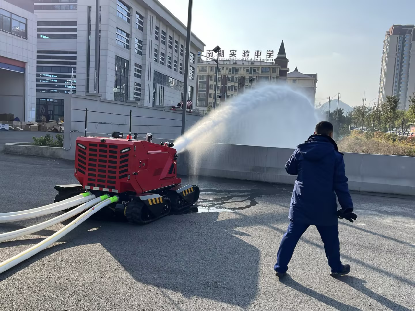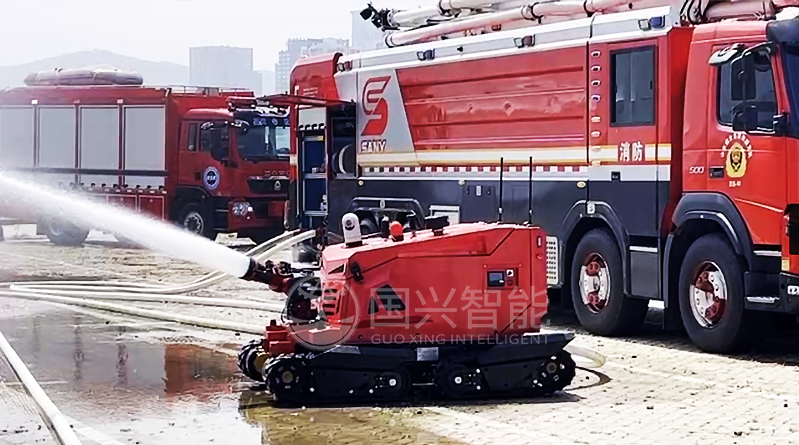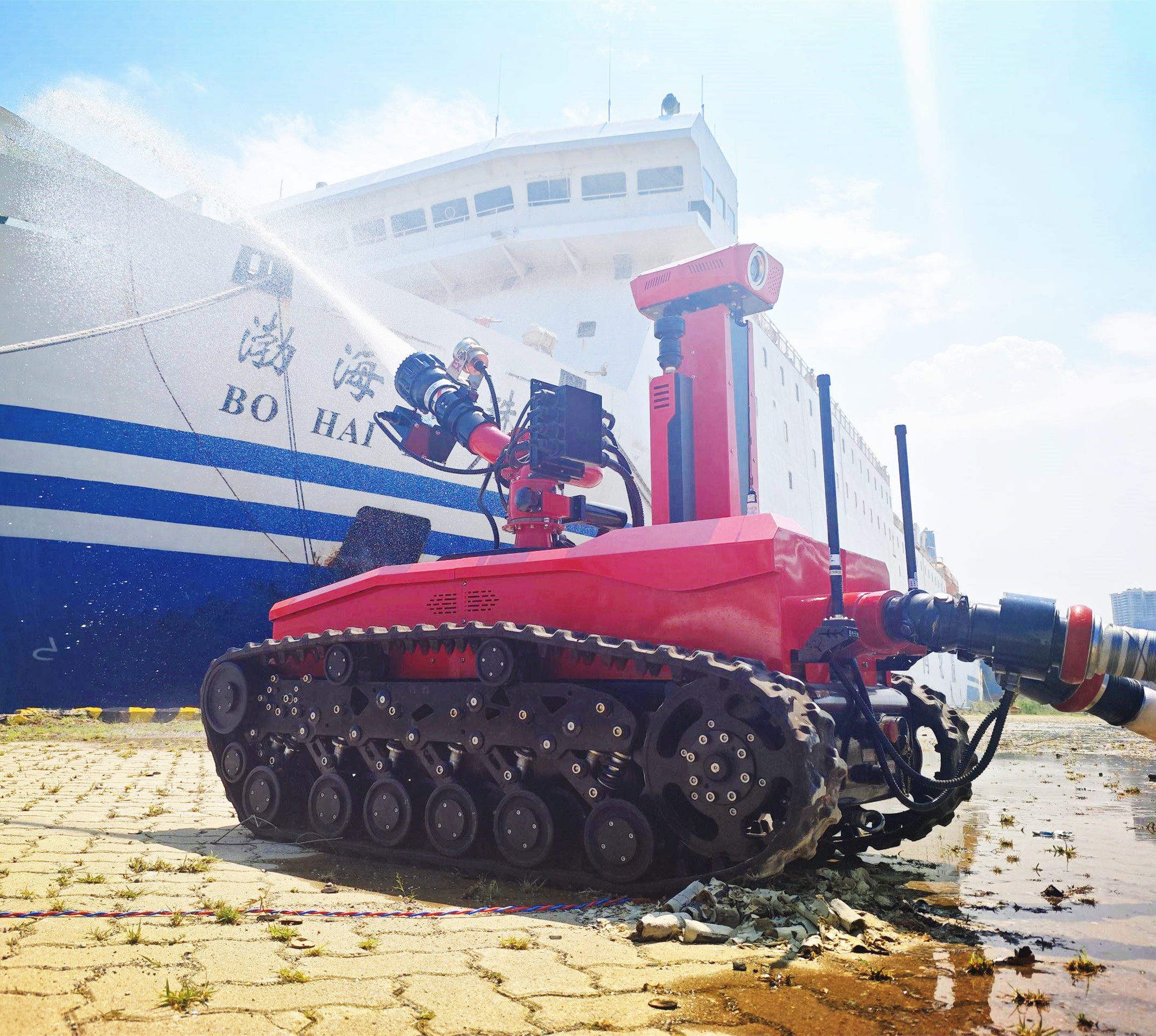Views: 0 Author: Site Editor Publish Time: 2025-05-19 Origin: Site








In today's world, fire-related emergencies pose a significant threat to both lives and property. The need for quick, efficient, and safe intervention has led to the development of firefighting robots, which are increasingly being used in hazardous environments such as burning buildings, chemical plants, and forest fires. Firefighting robots not only assist firefighters but also help to minimize risks to human lives, by performing tasks in areas where conditions are too dangerous for people.
One of the most crucial aspects of firefighting robots is their ability to withstand extreme heat, fire, and hazardous conditions. Designing a robot capable of operating in such environments presents numerous challenges.
Firefighting robots are required to endure environments that can reach temperatures above 1,000°F (538°C), depending on the type of fire and the materials involved. The heart of these robots' success lies in their ability to resist such extreme heat without suffering internal damage.
To achieve this, manufacturers utilize a combination of advanced materials, each designed to resist heat while still providing durability and functionality.
Heat-Resistant Metals: Firefighting robots are often built using heat-resistant metals such as titanium, stainless steel, and aluminum alloys. These metals are specifically chosen for their ability to endure extreme temperatures while maintaining structural integrity. Titanium, for example, has a high melting point and is known for its excellent thermal stability, making it a common material in robots exposed to intense heat.
Ceramic Coatings: In addition to metals, many firefighting robots are coated with ceramic-based materials. Ceramics are known for their excellent heat resistance properties and can withstand temperatures well beyond 2,000°F (1,093°C). These coatings are often applied to high-stress areas of the robot, including the engine compartment, motors, and structural frame, where heat damage is most likely to occur.
Insulated Housing: Another critical design element is insulated housing. By using advanced insulation materials, such as ceramic fiber or foam, manufacturers can effectively keep internal components safe from heat damage. These materials act as a thermal barrier, reducing the amount of heat that reaches the robot’s critical parts, including its electronics, sensors, and wiring.
The combination of these heat-resistant materials helps ensure that the robot’s internal components remain safe even in the most extreme environments. For example, the heat-resistant metals and ceramic coatings act as shields, preventing direct heat exposure to sensitive internal parts. The insulating materials act as buffers, allowing the robot to maintain its functionality without overheating, ensuring longer operational periods and enhancing the robot's effectiveness in a fire-fighting role.

Firefighting robots often come equipped with additional components designed to help them function effectively in high-temperature environments.
To prevent the robot from overheating during extended exposure to fire, firefighting robots are equipped with advanced cooling systems. These systems regulate the internal temperature of the robot, ensuring that it doesn’t overheat even when subjected to continuous heat from fires.
Liquid Cooling Systems: Many firefighting robots are fitted with liquid cooling systems. These systems circulate cool liquids through pipes embedded in the robot's chassis, absorbing the heat and dissipating it through radiators or cooling fins. This prevents the components from becoming too hot and ensures the robot can continue operating for long periods in high-heat conditions.
Air Cooling Systems: Some robots use air-cooled systems to cool the electronics. Fans are strategically placed inside the robot to circulate air over heat-sensitive components. This method is often more suitable for robots used in less extreme environments, but it is still an important feature for maintaining a safe operating temperature.
To further protect sensitive components from extreme heat, many firefighting robots are equipped with fire-resistant covers. These covers serve as additional thermal barriers to protect internal electronics and mechanical parts from exposure to high temperatures. The covers are typically made of fire-resistant fabrics, thermal barriers, or metal plates, all of which help prevent heat from infiltrating sensitive areas.
These components are essential to maintaining the robot's functionality during long firefighting operations, especially when the robot is exposed to intense direct heat.

In addition to heat resistance, firefighting robots must maintain their mobility and functionality in dangerous, physically demanding environments.
One of the key design challenges for firefighting robots is ensuring that they can continue to move through hazardous conditions such as rubble, uneven terrain, and deep smoke. The robot must be able to maneuver efficiently in tight spaces, navigate through obstacles, and operate in an environment filled with debris.
Tracked Wheels: Many firefighting robots use tracked wheels, similar to those found on military tanks. These tracks provide stability and traction on uneven surfaces, such as rubble or slippery floors, allowing the robot to move effectively across diverse terrain. This design also helps the robot distribute its weight more evenly, preventing it from sinking into soft surfaces like mud or water.
Shock-Absorbing Systems: Another important feature is the shock-absorbing system. The robot’s wheels or tracks may be equipped with shock absorbers or springs to minimize the impact of rough terrain or debris. This ensures the robot can continue moving despite rough conditions, preserving both its mobility and operational longevity.
During fire suppression tasks, firefighting robots are at risk of sustaining physical damage from flying debris, falling structures, or other hazards present in the environment. To protect the robot from physical damage, many firefighting robots are equipped with reinforced exteriors and impact-resistant casings.
Reinforced Casings: Robots used in fire suppression typically feature casings made of durable, high-strength materials, such as reinforced plastic or impact-resistant metals. These casings provide a protective shield that minimizes the risk of damage from falling objects or collisions with debris.
Armored Components: In addition to the external casings, some robots are equipped with armored components to protect key areas such as the camera systems, sensors, and motors. These components ensure that even in the most extreme situations, the robot can continue functioning effectively without its critical systems being damaged.

The importance of advanced materials and engineering in designing firefighting robots cannot be overstated. With the increasing prevalence of large-scale fires, hazardous industrial environments, and urban fire risks, the role of firefighting robots is becoming more critical in ensuring both effective fire suppression and the safety of human firefighters.
As technology continues to evolve, the future of firefighting robots looks even more promising. Advanced materials, such as heat-resistant metals, ceramics, and specialized cooling systems, have paved the way for the development of robots that can withstand extreme temperatures and challenging environments. Furthermore, their ability to remain mobile and protected from physical damage ensures that they can perform fire suppression tasks efficiently and effectively.
Shandong Guoxing Intelligent Technology Co., Ltd. is leading the way in the design and production of resilient firefighting robots. By leveraging cutting-edge technology and materials, they are helping to shape the future of firefighting. If you're looking to explore more about these advanced robots and how they can enhance fire safety, feel free to visit Shandong Guoxing Intelligent Technology Co., Ltd.. Their team of experts is available to provide valuable insights and support to help you implement the best firefighting solutions for your needs.
For inquiries or to learn more about their firefighting robot technologies, contact Shandong Guoxing Intelligent Technology Co., Ltd. today!
Why Is A Firefighting Robot Essential for Modern Emergency Response?
Guoxing Intelligent Firefighting Robots Featured in National Storage Tank Explosion Drill
New Product Launch: Guoxing Intelligent - "Underground Fire Extinguishing Reconnaissance Robot"
Exploring the Advantages of Guoxing Intelligent Robot Tracked Chassis
Guoxing Firefighting Robot Leads Future Safety Technology at the 2024 Dubai INTERSEC Exhibition